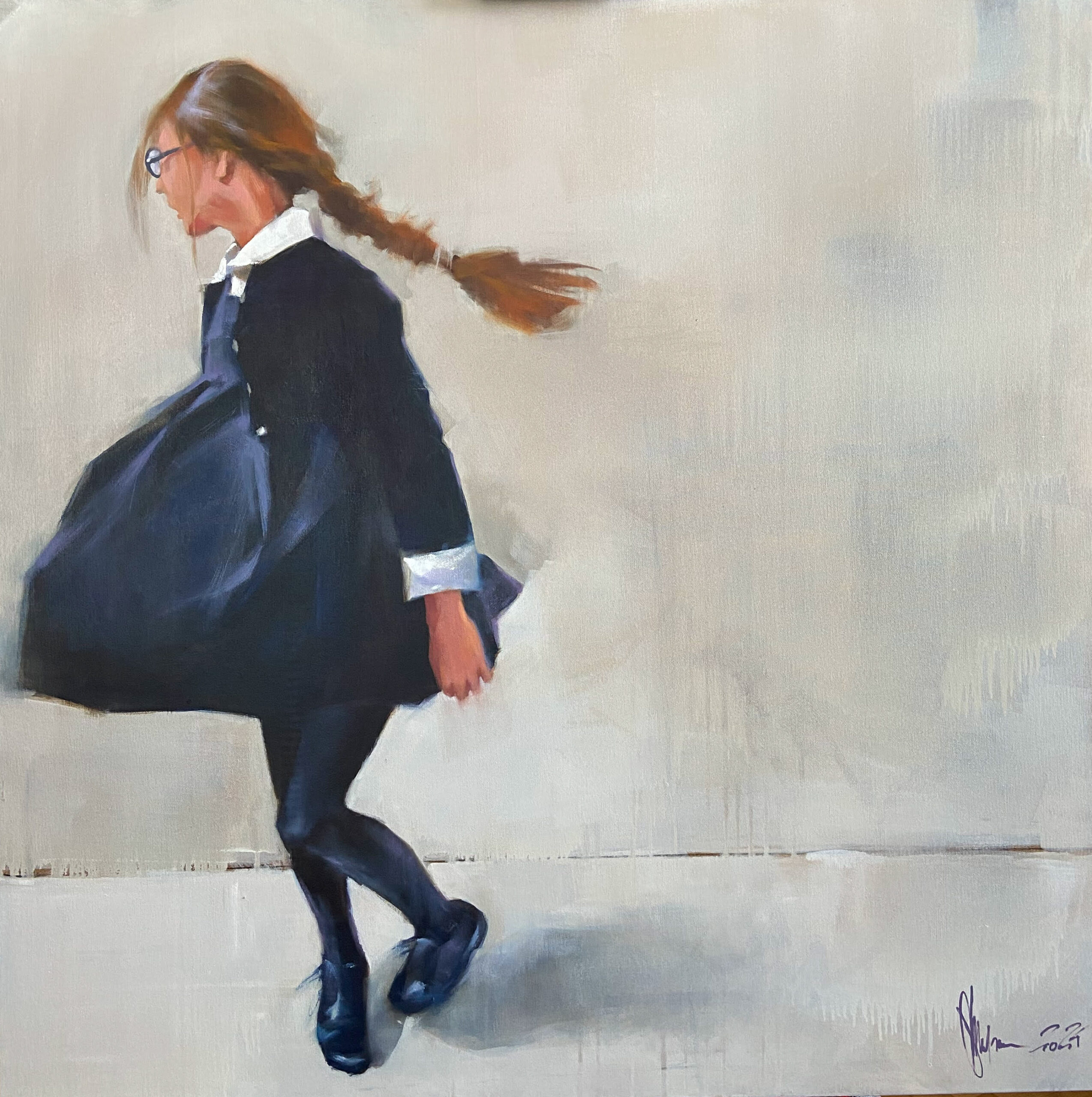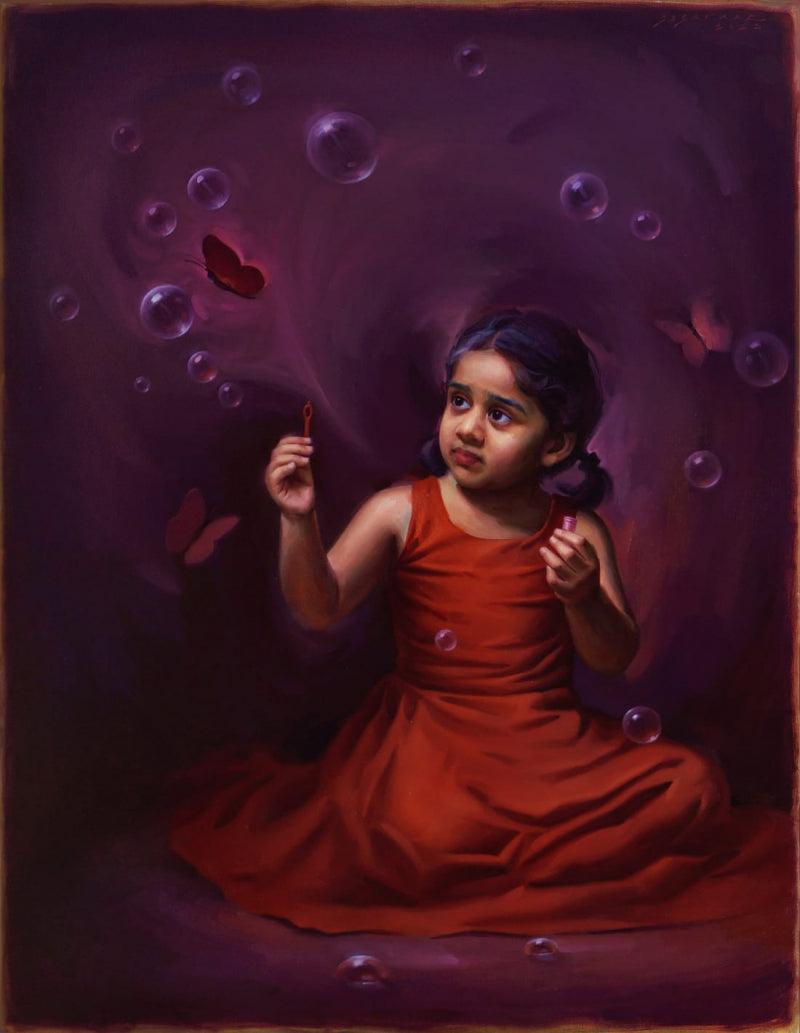The Evolution of Figurative Oil Painting: Recognizing Its Historical Value and Modern Interpretations
The advancement of figurative oil paint works as an engaging lens whereby to examine the interaction in between artistic expression and historical context. From the precise naturalism of the Renaissance to the stirring power of the Baroque, each period has actually added layers of meaning and strategy to this classic tool. Contemporary artists, attracting from this rich heritage, are now reinterpreting the human figure in methods that test traditional stories. As we explore these makeovers, one have to consider just how the dialogue between previous and present informs not just imaginative technique but also social reflections in a significantly complex world.
Origins of Metaphorical Oil Paint
The origins of figurative oil paint can be mapped back to the early Renaissance in Europe, specifically in the 15th century. This period marked a substantial separation from the rigid kinds and level representations particular of middle ages art. Musicians began to check out naturalism, stressing the human number and its psychological expression. The development of oil paint enabled higher deepness of shade and detail, boosting the realism and vibrancy of their job.

In this transformative era, figures were usually depicted within contextually abundant atmospheres, showcasing not only their physical qualities but additionally their emotional states. Pioneers such as Jan van Eyck and Titian used the tool's versatility, utilizing layering techniques to achieve brightness and appearance. This innovation helped with the representation of detailed textiles and the subtleties of skin tones, adding to the growth of portrait and narrative scenes.
Additionally, the Renaissance emphasis on humanism promoted a recognition for uniqueness, which subsequently influenced artists to produce more relatable and vibrant figures - figurative oil painting. Consequently, metaphorical oil paint arised as an effective car for storytelling and psychological engagement, laying the foundation for future imaginative motions and styles
Trick Historical Activities
Considerable historical movements have actually shaped the evolution of metaphorical oil painting, each contributing distinct viewpoints and strategies that increased the medium's possibilities. The Renaissance noted a zero hour, emphasizing realism and the human type, with musicians like Leonardo da Vinci and Michelangelo pushing the limits of anatomical precision and point of view. Following this, the Baroque age brought remarkable contrasts of light and shadow, exhibited by Caravaggio, who infused spiritual motifs with intense emotionality.
The 19th century presented Romanticism and Realistic look, where musicians such as Delacroix and Courbet challenged classic suitables, concentrating on individual expression and everyday life. The advent of Impressionism additionally changed the tool by stressing the results of light and shade, causing a separation from conventional depiction.
In the early 20th century, motions like Expressionism and Cubism redefined metaphorical painting with abstraction and the exploration of psychological depth. Each of these movements not just mirrored the social modifications of their times yet also prepared for contemporary interpretations. The interplay between these historic movements has actually produced an abundant tapestry of styles and ideologies, influencing modern-day artists in their pursuit of capturing the human experience on canvas.
Methods and Materials Evolution

Throughout the Baroque duration, methods such as chiaroscuro and sfumato original site arised, enhancing the psychological resonance of metaphorical compositions. Artists began to try out glazes and impasto, manipulating structure and brightness. By the 19th century, innovations like making use of pre-mixed paints in tubes transformed access, permitting musicians to paint en plein air and catch the fleeting effects of light.
The 20th century witnessed the introduction of artificial pigments and tools, which expanded the palette and changed the consistency of oil paints. In addition, the exploration of new application methods, such as combination blades and brushes of varying stiffness, additional varied imaginative expression. Collectively, these advancements show the progressing partnership between products, techniques, and the creative vision inherent in figurative oil paint.

Contemporary Analyses
Contemporary analyses of figurative oil paint reflect a dynamic discussion between practice and technology, where musicians test established standards and check out varied themes. This development materializes in various means, as contemporary musicians blend classical techniques with contemporary ideas, commonly attending to social, political, and individual stories.
Numerous professionals draw ideas from historical jobs, yet they instill their items with contemporary perspectives, utilizing the human kind as a vehicle for discourse on society, sex, and identification. Artists progressively try out more helpful hints abstraction, distortion, and multimedias, which allows for a wider analysis of the number and its context.
In addition, using vivid color schemes and non-traditional structures typically serves to interfere with typical watching experiences, prompting vital interaction from audiences. This shift in focus extends beyond looks; it reflects an expanding recognition of the complexities of human experience in an interconnected world.
As figurative oil painting continues to progress, it remains an important medium for discovering the nuances of contemporary life, symbolizing both a regard for heritage and a commitment to dynamic thought. The result is a rich tapestry of expression that reverberates with the complexities of the modern-day human problem.
Impact on Modern Art
The effect of metaphorical oil paint on modern-day art is extensive, as it has consistently motivated a myriad of imaginative movements and methods throughout the 21st and 20th centuries. From Expressionism to Surrealism and beyond, the expedition of the human number has actually remained a main motif, enabling musicians to communicate complicated emotions and stories. This emphasis on figurative representation has actually led to a re-examination of typical strategies, causing ingenious techniques that blend realism with abstraction.
Additionally, modern artists have accepted figurative oil paint as a way to address social and political issues, making use of the medium to challenge perceptions of society, gender, and identity. The revival of interest in figurative operate in current years mirrors a yearning for connection in an increasingly digital world, where human experience and emotion are critical.
Additionally, the dialogue in between figurative oil painting and modern art is evident in the works of musicians such as Kehinde Wiley and Jenny Saville, that draw on historic references while instilling their items with modern relevance. Eventually, metaphorical oil paint remains to form and redefine contemporary imaginative expression, emphasizing its enduring value in the art world.
Final Thought
The advancement of metaphorical oil paint highlights its historic significance and adaptability across different creative movements. From the naturalism of the Renaissance to the stirring expressions of the Baroque and the ingenious techniques of modernity, this medium has actually consistently changed. Contemporary interpretations show unique compositions and dynamic shades, fostering essential involvement with political and social styles. Eventually, figurative oil painting stays a vital tool for exploring the human experience, reverberating exceptionally in today's electronic landscape.
The advancement of figurative oil painting serves as a compelling lens via which to check out the interplay between creative expression and historic context.Significant historical activities have shaped the development of figurative oil painting, each contributing unique viewpoints and strategies that expanded the tool's opportunities.As historic movements formed the trajectory of metaphorical oil painting, the techniques and products used by artists have also undergone considerable transformations. figurative oil painting.The impact of figurative oil painting on modern art is extensive, as it has actually constantly inspired a myriad of creative activities and techniques throughout the 20th and 21st centuries.The evolution of metaphorical oil painting emphasizes its historical value and adaptability across numerous creative activities